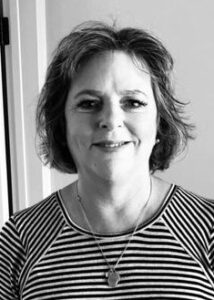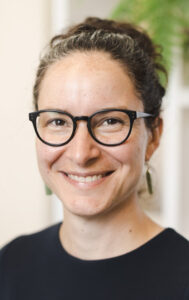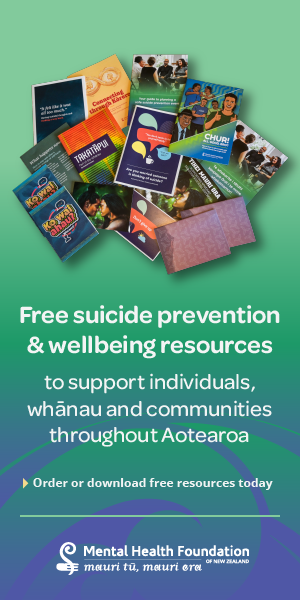Nurse prescribers are having a growing influence in primary care, improving access to medicines where GPs are in short supply.
The number of prescriptions written by nurses in primary care rose nearly 70 per cent to 1.4 million last year, while the number of education programmes for community nurse prescribers approved by the Nursing Council has nearly doubled in the past year.
Ministry of Health prescribing data also shows nurse prescribers in primary care achieving higher rates of prescribing to Māori, high-needs populations and women than GPs.
In light of a worsening shortage of GPs, nurse prescribers are widely regarded as essential for the future health service, improving equity in health care by increasing access to medications, particularly in high-needs and isolated rural areas. (A report from the Royal College of General Practitioners found 50 per cent of GPs planned to retire in the next eight years, on top of an overlying shortage.)
There are three levels of nurse prescribing:
-
- Nurse practitioners (NPs), who can prescribe much as doctors can, and have masters-level education.
- Nurse prescribers in primary health and specialty teams who can prescribe for common and long-term conditions, with postgraduate education in prescribing.
- Community nurse prescribers, who can prescribe simple medications for straightforward conditions in normally healthy people, and have a work-based training programme combined with online learning.
According to the ministry data, although nurse prescriptions made up only 3 per cent of those issued in primary care last year, the number of nurse prescriptions in this area of care has grown by 68 per cent from around 834,000 in 2019 to approximately 1.4 million in 2021.
However nurses wrote proportionately more prescriptions for Māori, for women and for those in high needs areas than GPs did.
The figures, released by health analytics company Matui, show that in primary care nurse prescribers and general practitioners (GPs) prescribe a similar range of common medicines, and had similar patterns of prescribing across patient age groups.
However nurses wrote proportionately more prescriptions for Māori, for women and for those in high needs areas than GPs did.

In 2021, 21 per cent of nurses’ prescriptions in primary care were for Māori, compared to 15 per cent of those written by GPs. Nurses wrote nearly a third of their prescriptions (30 per cent) for people living in areas of high deprivation, compared to less than a quarter of those written by GPs (24 per cent).
Nurses were more likely than GPs to have prescriptions dispensed to women — 61 per cent of nurses’ prescriptions going to women compared to 52 per cent of GPs’ prescriptions.
Jan Adams is the nursing director of Pinnacle Health, a network of 87 primary practices stretching across the former Tairawhiti, Taranaki, Lakes and Waikato District Health Boards (DHBs), with more than half a million enrolled patients. It provides medical and nursing supervision to the practices, and also some community services itself.
‘Needs to be celebrated’
Adams says the increase in nurse prescribing and who it was reaching “need to be celebrated”. The increase showed that more patients were getting quick access to medications, which improved equity, leading to improved health outcomes.
“Nurses are very trusted by the population, and they always establish good relationships with patients. The fact that women are the majority of patients nurse prescribers are seeing — particularly Māori and high needs people — needs to be celebrated.”
She believed nurse prescribers were a “very important” part of primary care and would increasingly fill gaps resulting from a shortage of GPs.
Karyn Sangster, formerly deputy chief nurse at Counties Manukau DHB and now a consultant to the Nursing Council, believes nurse prescribing will be a “core component” of nursing in the future and wants to see prescribing incorporated into the bachelor of nursing curriculum.
Numbers growing
Numbers of all types of nurse prescriber have grown in the past year, with community nurse prescribers growing the most.
Nursing Council data shows that at March 31 this year, there were 199 community nurse prescribers (up 140 per cent from 83 the previous year).
There were 368 nurse prescribers in primary health and specialty teams (up 22 per cent from 301 the previous), and 612 nurse practitioners, up from 533 the previous year.
There were also 53 diabetes nurse prescribers, but the pathway to this model of prescribing has been closed, and diabetes prescribing is now included in the much broader primary health and specialty teams category.
“This is so nurses, right from graduation, can have access to the medicines list for nurse prescribers, so they can prescribe simple analgesia such as panadol,” Sangster said.
“This will save so much time in hospitals, where a nurse could prescribe simple pain relief, rather than having to wait hours for a house surgeon.”

She also said the education programmes for community nurse prescribers were “much safer” than standing orders (whereby a doctor or NP can delegate some prescribing to nurses under set circumstances).
The Nursing Council recently increased the number of education programmes for community nurse prescribers from four to seven, with programmes now operating in Counties Manukau, Family Planning, the Midlands Collaborative, the former MidCentral and Hawkes Bay DHBs, 2 Districts (covering the former Capital & Coast, Hutt Valley and Wairarapa DHBs), and the South Island Alliance (the five South Island district health boards).
Pinnacle Health is part of the Midlands Collabarative (comprising five DHBs and eight primary health organisations in the Midlands region of the North Island), and its recently approved annual training programme for community nurse prescribers has 43 nurses enrolled for its August intake.
Adams said: “There is a lot of interest. Community nurse prescribing has grown quickly in a short period in terms of interest and success and will continue to grow.”
The course combines online learning with clinical supervision by an authorised prescriber. To be eligible for the course, nurses must have a minimum of three years’ clinical experience, including at least one year in the area of practice where they will be prescribing.
Adams says Pinnacle already has 41 community nurse prescribers, though she says there are more than that working in the Midlands region as some are employed by (former) DHBs. Some work as school nurses; others as practice nurses, where for example the nurse could be giving a woman a cervical smear and find she has a urinary tract infection which she can treat on the spot rather than the patient having to come back for an appointment with the GP. Another could be doing an outreach visit to a whānau with a couple of ear infections, which could be treated straight away.
Sangster said community nurse prescribers were also working in sexual health clinics, as public health nurses, and as triage nurses for walk-in patients at primary care clinics, treating those with minor health conditions.
Holistic care and prescriptions

She said nurse prescribers were providing holistic care as well as prescriptions, eg a school nurse could be treating a child with tinea on their feet, and find that their shoes were too small, so refer them to KidsCan for shoes and a raincoat.
The challenges for nurses becoming community prescribers, Adams said, included getting time to do the course, securing a prescribing supervisor (a GP or NP), and getting enough clinical supervision time with them.
The Nursing Council’s director of professional standards, Brittany Jenkins, said the council was also aware of this point. It acknowledged that isolated, remote areas which would benefit from having nurse prescribers had reported finding it difficult to support their development because access to mentorship from a GP or NP might be limited.
Sangster said nurse prescribers had a particularly important role to play in primary care, where the shortage of GPs was restricting access to medication. “But they will always be working in collaboration with the GP, providing care to patients with routine problems, freeing up the doctor’s or NP’s time to focus on complex patients.”
The early development of nurse prescribing in this country, with the advent of NPs and diabetes nurse prescribers, had shown that nurse prescribers were “safe and well-accepted by the public and other health-care professionals. They are cautious and reliable prescribers and are increasing people’s access to medicines”.
Nurse prescribers in general were gaining more acceptance from medical colleagues, and in fact there were requests from some doctors to increase the types of medicines nurses could prescribe . . .
Sangster said that in a 2013 consultation on nurse prescribing, some medical specialists had worried about antimicrobial stewardship, ie the rise of resistance to antibiotics if nurses were to overprescribe them.
“However they saw that nurses followed the guidelines and were cautious and safe with antibiotics.”

PRESCRIBING REPORT
Pharmac-sponsored health educators He Ako Hiringa have launched an online prescribing report which shows details of national prescribing practice in New Zealand.
The EPiC Annual Prescribing Report, presented as an interactive dashboard, can help all types of nurses focus on key problems of national prescribing practice, such as polypharmacy and underutilisation of medicines in certain populations.
EPiC lead analyst Alesha Smith said the 2022 report showed more key medicines getting to priority groups, and continued reduction in opioid analgesics being prescribed to young people.
It also showed “alarming” levels of polypharmacy in older people, with more than one in 10 people aged over 75 taking 10 or more medications. This data offered aged care nurses the opportunity to assess their patients’ risk of polypharmacy harm, she said.
Nurse prescribers in general were gaining more acceptance from medical colleagues, and in fact there were requests from some doctors to increase the types of medicines nurses could prescribe, she said.
Jenkins said new government regulations, gazetted on March 23 this year, had expanded the list of medicines available to nurse prescribers. (Community nurse prescribers and diabetes nurse prescribers are authorised to prescribe from their own respective subsets of this list.)
Expansion of this list had the affect of improving access to these medicines, Jenkins said. The list now included all pharmacy-only general sales medications — “so anything a member of the public can purchase, nurses can prescribe”.
Nurses could now also prescribe intravenous panadol as well as oral panadol, along with some anti-coagulants, hepatitis C treatments, new diabetes drugs and medical abortion pills.
Jenkins also said a consultation was in progress to consider adding two anti-viral drugs to the nurse prescribing list to help with COVID-19 treatment. She said the Nursing Council also now recognised telehealth consultations as a way nurses could assess patients leading to a possible prescription.
And from June 30 this year, all nurse prescribers were now recertified every three years, instead of annually.
Adams saw a growing role for nurse prescribers as part of multidisciplinary teams, which were becoming increasingly important to provide services to rural communities. These teams, which had access to a GP for advice and support, could include nurses, health improvement practitioners, mental health workers, pharmacists, dietitians and social workers. Such teams worked collaboratively with GP practices, and worked in different ways with patients to improve access and equity.
“For the future, we will see more and more of this kind of collaborative health teams, especially in rural areas.”
Sangster said there was a “desperate need” for such health-care teams, including all levels of nurse prescribers, to meet the needs of the rural sector and of Māori and Pacific people.




